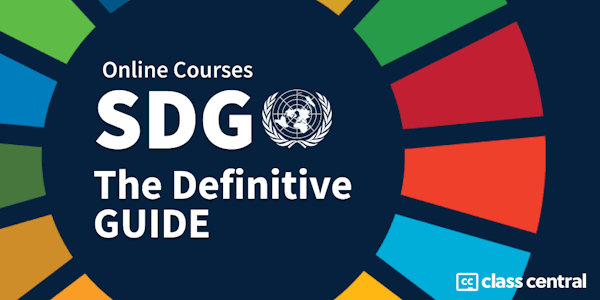Oceanography: a key to better understand our world
University of Barcelona and Fundació Navegació Oceànica Barcelona via Coursera
-
550
-
- Write review
Overview
The course for a round the world regatta leads the boats through the Mediterranean Sea and the Atlantic, Southern Indian and South Pacific Oceans. On their voyage, the skippers come across a large variety of oceanographic situations: strong currents, floating ice, wave formations of every kind and biological diversity.
In this course the student will learn about the foundations of the science of oceanography. You'll learn about the classification and formation of the ocean floor, how current sea satellite analysis systems work, the chemistry of the oceans and the processes that led to its formation.
To follow this course does not require previous knowledge of oceanography.
Syllabus
- 1A - The Mediterranean: a model of an ocean - Temperature, salinity and pressure.
- Module 1 addresses some of the fundamental concepts of descriptive oceanography related to the physical characteristics of water: the vertical distribution of temperature and salinity, TS diagram, stability and destabilization of the water column, the formation of water dense and deep, the water masses and circulation. It is necessary also introduces concepts to understand the relationship between the distribution of the mass of water, its surface topography of a regional or larger scale, and called geostrophic circulation, where it plays a fundamental role the Coriolis force. While the concepts presented have general applicability, examples are the Mediterranean, starting with the characteristics of the waters near Barcelona, where it begins and ends the Barcelona World Race, and ending with the general circulation of the water masses around the Mediterranean.
- 1B - The Mediterranean: a model of an ocean - Water masses and circulation
- In this module you will learn how dense waters and water bodies are formed. Where the Mediterranean will be used as a model of ocean. As well as some of the fundamental concepts of marine dynamics, which is how the Coriolis and pressure gradient force is formed. Besides the importance of dynamic topography and geostrophic flow. Hope will be to your liking.
- 2. The Global Ocean
- This module will enter fully into the Global Ocean, will review and generalize the aspects previously referred to in the previous module. We will see the role of the ocean on a global scale, and how we can affect those who live closer or farther from the coast. Try to understand why it is still quite unknown and will glance nose in the marine environment. That is, how it behaves for those living beings, most who live within the ocean or in direct contact with him.
- 3A. Satellite oceanography: all eyes on the planet (I)
- In this module you will learn the importance of ocean observation by satellite, talk about remote sensing, electromagnetic radiation emitted and reflected, and the importance of their study for navigation.
- 3B. Satellite oceanography: All eyes on the planet (II)
- This new module will expand the study of oceanography satellite, and microwave as for obtaining information are used. What are they and what is the importance of active sensors. And finally, other applications of satellites and their importance.
- 4. Ocean chemistry: a chemical industry with wall-less pipes
- In this section you will learn ocean chemistry what is it? how does it work? What is the vertical axis of the biosphere and the vertical segregació of the elements and how it works? What is carbon carbonate system and what is its relationship with the ocean conveyor belt?. The answers to all these questions will help us understand how the oceans work, the importance for navigation and its relationship to the planet's climate.
- 5. Ocean basins: a memory sustained for millions of years
- The result of the evolution of the crust of the Earth: a set of land masses and ocean basins in continuous motion over crust. With a little history we will achieve understand the result of the evolution of the crust of the earth and the diversity of ocean domains: the continental margins to large tanks. Large ocean basins
Taught by
Jordi Serra
Reviews
1.0 rating, based on 1 Class Central review
4.5 rating at Coursera based on 269 ratings
Showing Class Central Sort
-
I luckily only signed up for the free version of this instead of paying £38 for a certificate afterwards. The course is advertised as being in English, but it is not. All the videos are in Spanish and if you want to know what they are saying, you have to read the long text underneath.
This is not something I am going to continue with.





